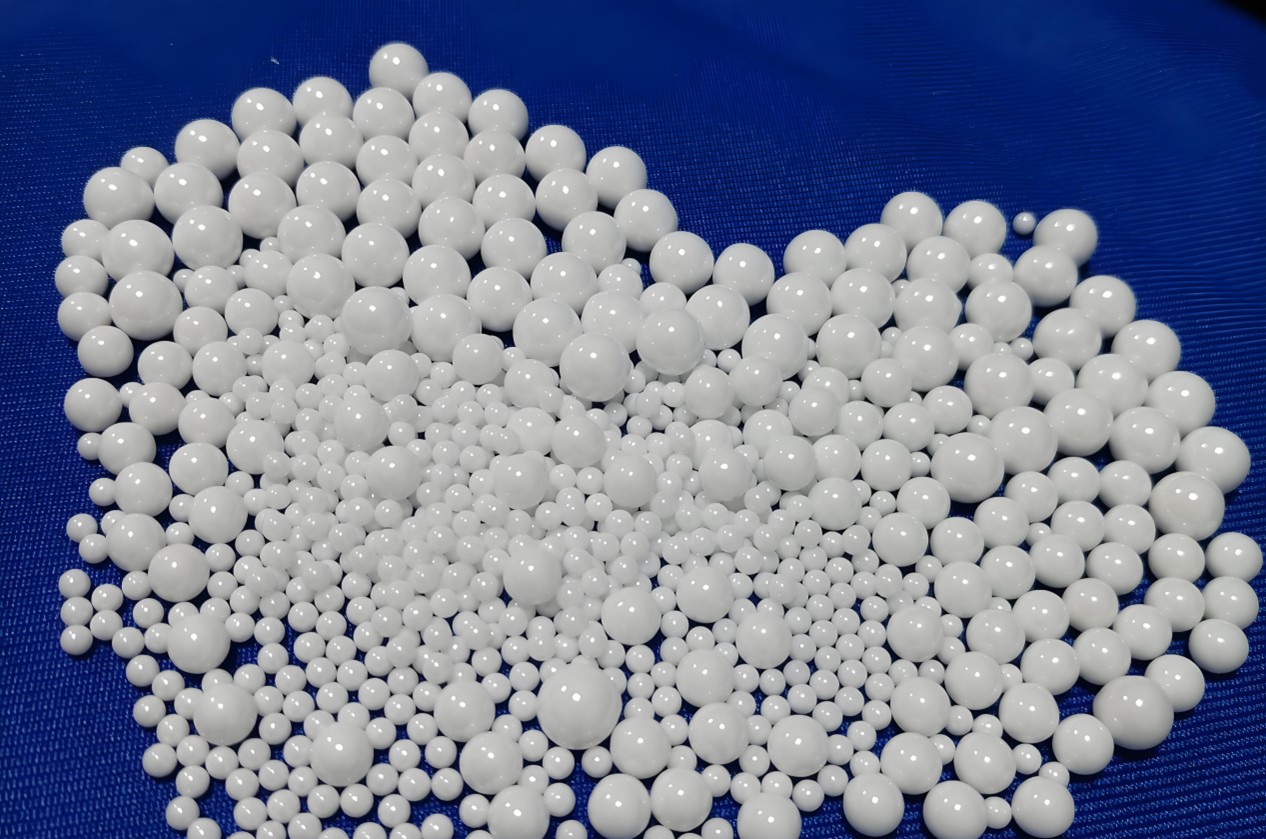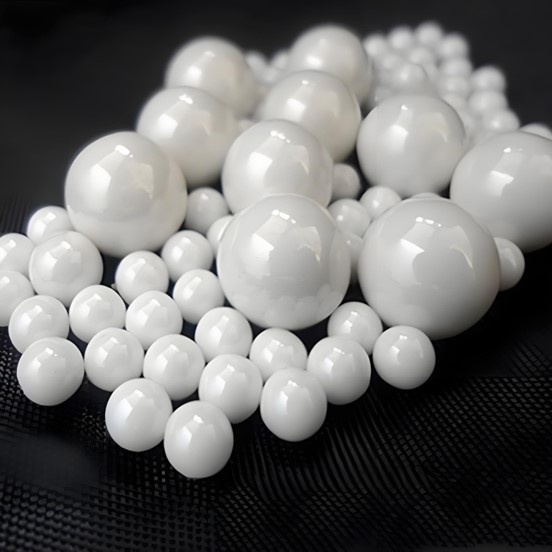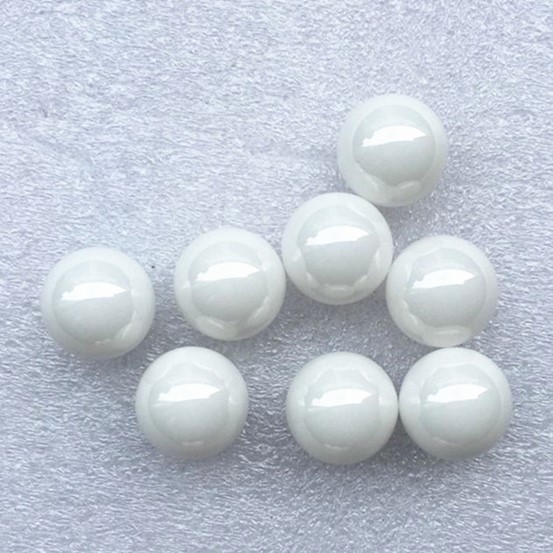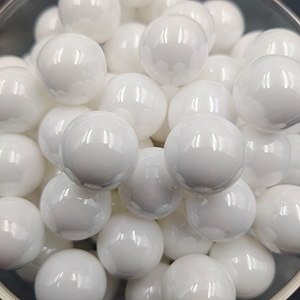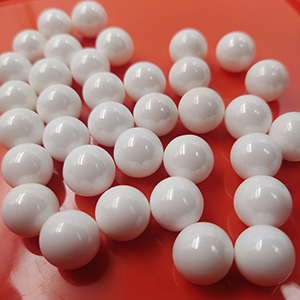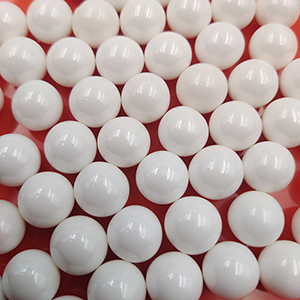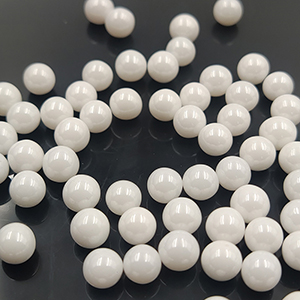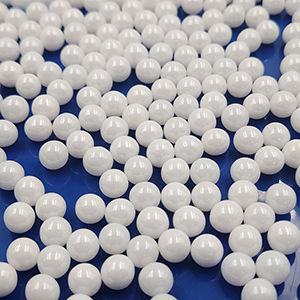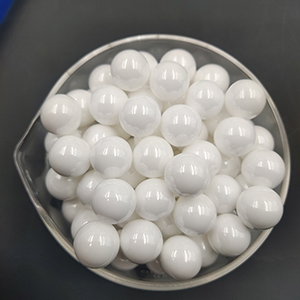Several Production Processes Of Zirconia Beads
Zirconia Beads have 3 kinds of production process, extrusion molding, isostatic pressing molding, rolling molding, titration molding.
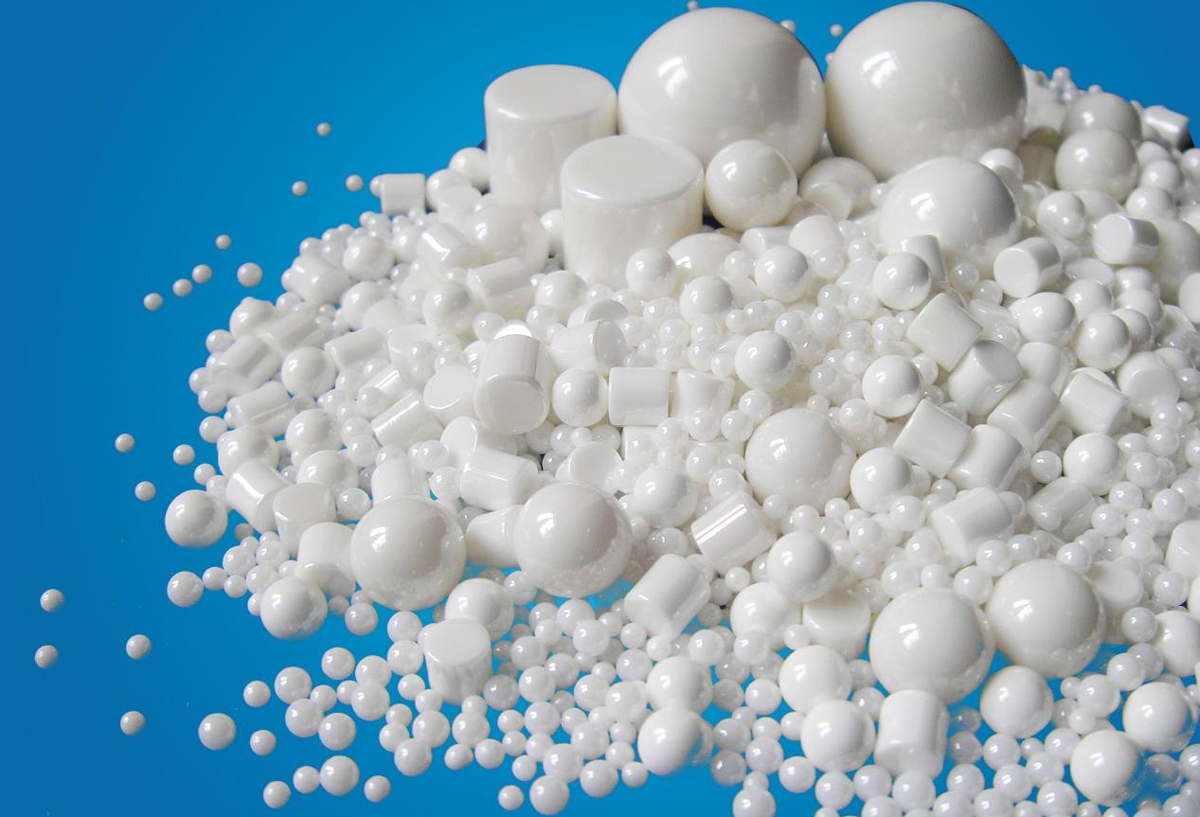
(1)Extrusion molding Extrusion molding is to use the vacuum mud refining device to extrude the bar blank, and then cut into small sections through the billet cutting device, press the small section, roll into a ball, and get the ball blank after drying. This method has the advantages of low cost, simple process, low density, low strength and poor wear resistance, and some enterprises use this method to produce clay balls, which has been basically eliminated.
(2) Isostatic pressing Isostatic pressing is a more advanced ceramic ball forming method. Isostatic pressing is to fill powder in a spherical soft mold, seal the soft mold into the working chamber of a cold isostatic press, compress the mold with a liquid medium of uniform pressure in all directions, and then remove it, and get a spherical blank after mold release. The advantage of this method is that the isostatic pressure and uniform high pressure make the spherical billet uniform and dense, and the green billet strength is higher. The disadvantage is that the equipment investment is large, the need for manual charging to release the mold, it is difficult to achieve automation. In addition, when producing ceramic balls with small particle size (φ≤15mm), the production efficiency is low due to the limitation of the mold, which restricts the application of isostatic molding technology in the production of small particle size Porcelain Balls.
(3) titration molding titration method can also be called the outer gel method, which is characterized by the use of surface tension molding by the slurry droplets in an oily medium. Ceramic microbeads prepared by titration forming method rely on the slurry droplet and the oily dispersion medium different surface tension into a ball, the resulting sphericity is better than the traditional rolling forming method, and the inside of the microbeads uniform, high density, no need to add spray glue treatment, no need to mold, in the small particle size ceramic ball production technical level is better than isostatic pressure method and rolling method. The slurry used in titration molding requires high solid content and low viscosity, it can be said that the performance of the slurry will directly affect the subsequent molding steps, in addition, this method has complex processes and parameters, and the cleaning of oily media on the surface of the microbeads is difficult, but this method is still a method that can continuously and efficiently produce small particle size ceramic microbeads.
(4) Rolling molding Rolling molding method draws on the production process of northern Yuanxiao, which is a semi-dry and semi-wet forming method. It is formed by spraying binder liquid to moisten the ball core, adding dry powder to the outside of the wet ball core, and then compacting by rolling action. Through the collision, extrusion and rolling between the ball billet or between the ball billet and the inner wall of the ball making machine, the compact, uniform and round ball billet can be obtained. The equipment and process required by the rolling forming method are relatively simple, less investment, high production efficiency, and can be continuously produced in large quantities, especially for the processing and molding of small diameter ceramic balls. Compared with other molding methods, rolling molding has higher requirements for powder, which not only requires the raw material to have excellent plasticity, but also requires the raw material to have the appropriate particle size and better fluidity, and the rolling molding method also has higher requirements for the operation process. This is because there are many factors that affect the performance of the billet, such as speed, bevel, diameter, the amount of binder aqueous solution added and the amount of powder feed. These factors will influence each other, work together to roll molding, and continue to change dynamically as the molding process progresses. But the defects do not obscure, rolling forming principle is simple, high production efficiency, is still the best method of millimeter-level ceramic ball molding. Nowadays, many domestic enterprises through the control and optimization of various parameters, spray, powder device to achieve automation, can large-scale production of alumina, zirconia and other high-quality ceramic balls.

